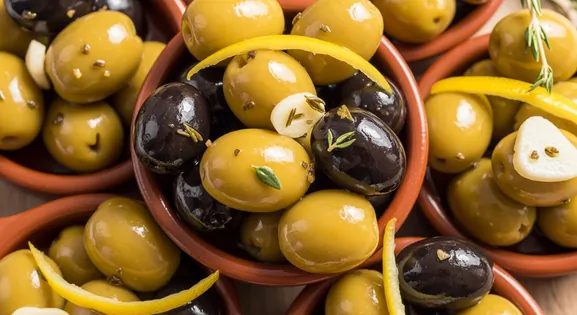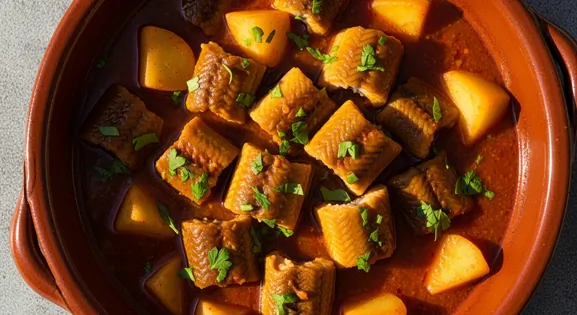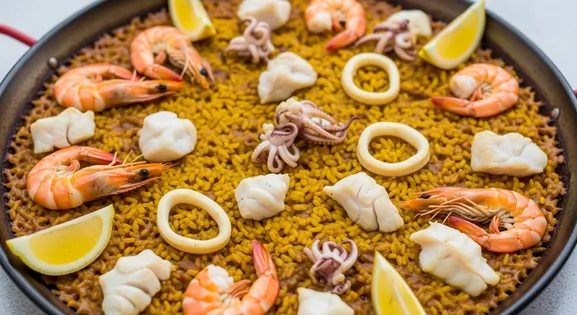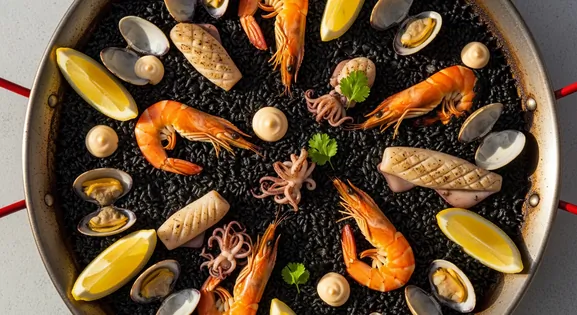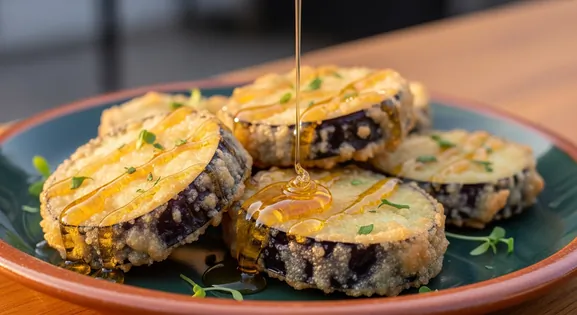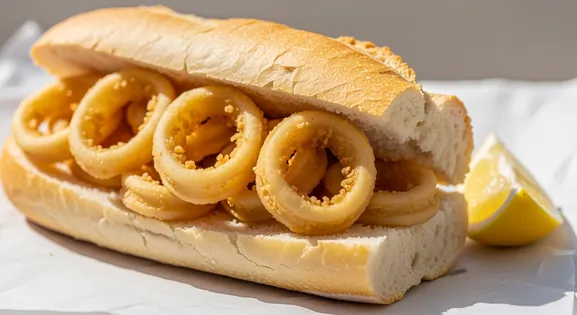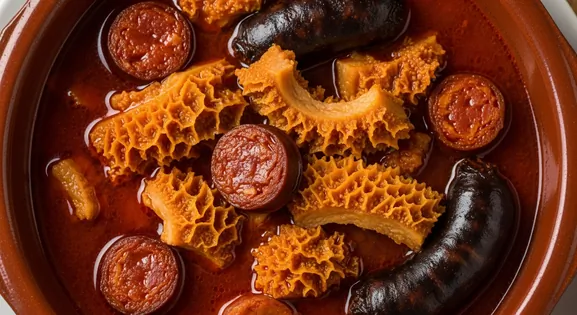Cocido Madrileño in Spain: A Complete Food Lover's Guide
Cocido Madrileño
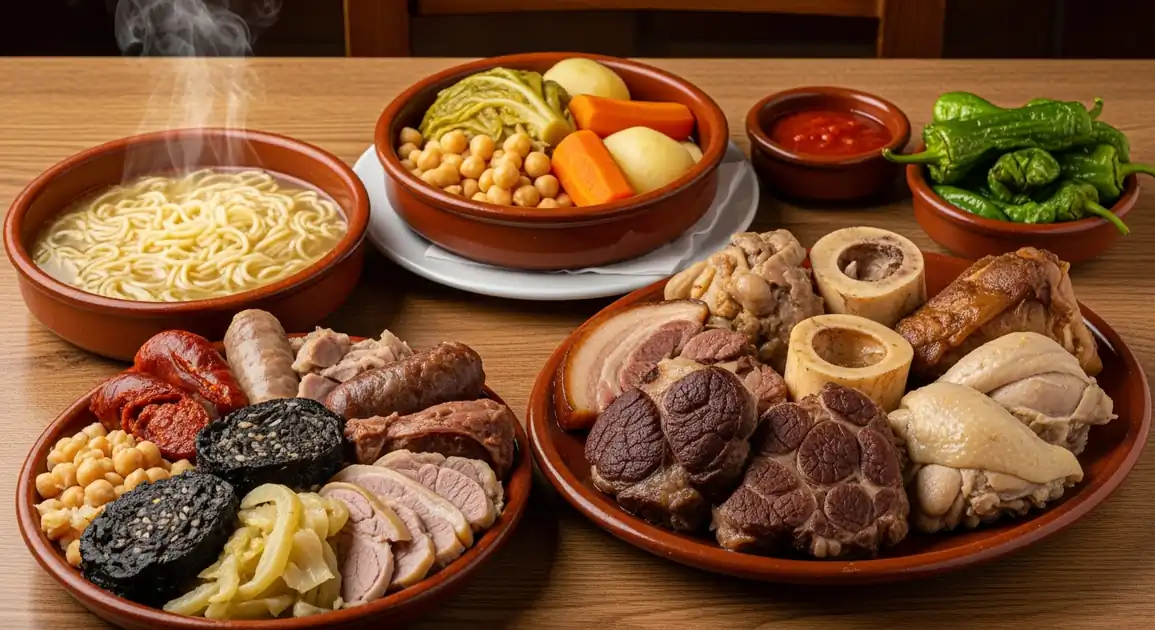
A Culinary Snapshot
Cocido Madrileño is Madrid's signature stew, a hearty and elaborate dish famed for its presentation in three sequential courses ('vuelcos'). It begins with a rich noodle soup derived from the cooking broth, followed by tender chickpeas and vegetables, culminating in a platter of succulent cooked meats like chorizo, morcilla, pork, beef, and chicken. It's a substantial, warming meal deeply rooted in Spanish culinary tradition.
The Story Behind the Dish
The origins of Cocido Madrileño trace back to medieval Spain, likely evolving from the Sephardic dish 'adafina' and related to Spain's tradition of 'olla podrida' (rich pot stews). Initially a humble dish providing sustenance for workers, it gradually gained complexity and status, becoming a beloved staple across Madrid's social strata, from modest homes to renowned restaurants established in the 19th century. It embodies the gastronomic heritage of Madrid.
Crafting the Perfect Dish
Preparing Cocido Madrileño is a slow, meticulous process. Chickpeas are soaked overnight. Meats (beef, pork, chicken, bones) are simmered first to create a rich broth. Vegetables are added later to cook until tender. Chorizo and morcilla are often cooked separately to control fat release. Finally, a portion of the strained broth is cooked with fine noodles ('fideos') for the first course ('sopa'). The chickpeas and vegetables form the second course, and the meats the third.
Key Ingredients of Cocido Madrileño
Chickpeas (Garbanzos)
The foundation of Cocido, these legumes are soaked overnight and slow-cooked until incredibly tender, absorbing the rich flavors of the broth and meats.
Quality indicator: Look for plump, creamy chickpeas that hold their shape but melt in your mouth, indicating proper cooking. They should not be hard or mushy.
Assorted Meats (Carnes Variadas)
A diverse selection including beef shank, chicken, pork belly, chorizo, and morcilla (blood sausage), each contributing unique textures and depths of flavor to the stew.
Quality indicator: Quality meats should be tender and flavorful, not dry or stringy. Chorizo and morcilla should be well-cooked and aromatic, not overly greasy.
Noodles (Fideos)
Fine, thin pasta used for the first course (sopa). They cook quickly in the strained broth, providing a comforting and essential start to the meal.
Quality indicator: The noodles should be al dente, not overcooked or mushy, and should absorb the broth without becoming heavy.
Local Cocido Madrileño Variations in Spain
Inclusion of 'Relleno'
Some recipes include a 'relleno', a type of savory dumpling made from breadcrumbs, egg, garlic, and parsley, cooked in the broth and served usually with the meats.
Different Meat Cuts
Minor variations exist in the exact cuts of pork, beef, or chicken used, or the type of chorizo/morcilla, depending on the restaurant or family tradition.
Serving Style Adjustments
While traditional service is three separate vuelcos, some less traditional venues might combine the second and third courses for simplicity.
Vegetable Additions
Occasionally, other vegetables like turnips or green beans might be included, though potato, carrot, and cabbage are standard.
What to Serve with This Dish
Red Wine
Wine
A robust Spanish red wine, such as a Tempranillo or Garnacha, complements the rich and hearty flavors of the meats and chickpeas in Cocido Madrileño, balancing its intensity.
Guindilla Peppers
Condiment
Small, pickled green peppers (guindillas) offer a sharp, vinegary counterpoint to the richness of the stew, providing a refreshing bite that cleanses the palate between mouthfuls.
A Traveler's Guide to Authenticity
What to Look For
-
All three courses served piping hot
Ensures the food is freshly prepared or properly held at safe temperatures, critical for a slow-cooked dish.
-
Tender meat and fully cooked chickpeas/vegetables
Indicates thorough cooking, essential for safety and digestibility.
-
Reputable restaurant known for Cocido
Established places specializing in Cocido usually maintain high standards of preparation and ingredient sourcing.
-
Clear, flavorful broth (first course)
A well-made broth is a sign of quality preparation, although cloudiness isn't necessarily a safety issue.
What to avoid
-
Lukewarm servings
Food served at improper temperatures poses a significant food safety risk.
-
Undercooked chickpeas or tough meat
Could indicate insufficient cooking time, potentially compromising safety and quality.
-
Restaurants with poor hygiene ratings or reviews
General cleanliness is paramount for food safety.
-
Excessively greasy broth or meats
While Cocido is rich, extreme greasiness might indicate poor fat skimming or ingredient quality, though not a direct safety threat.
Explore Cocido Madrileño in Detail: City Guides
Discover where to find the best Cocido Madrileño and learn local tips in these cities:
Dietary Information
Dietary Information
Important Note for Travelers: Your safety is our priority. Below are the common allergens associated with the traditional preparation of this dish. However, recipes and ingredients can vary significantly between establishments. Always confirm all ingredients directly with the food vendor before ordering, especially if you have a severe allergy.
Potential Allergens
Dietary Suitability
How to Order Cocido Madrileño
Frequently Asked Questions about Cocido Madrileño
What is Cocido Madrileño?
Cocido Madrileño is a traditional chickpea-based stew from Spain, famously served in three distinct courses ('vuelcos'). It begins with a flavorful noodle broth, followed by tender chickpeas and vegetables, and culminates with a platter of various cooked meats like chorizo, morcilla, pork, beef, and chicken.
How is Cocido Madrileño typically served?
Authentic Cocido Madrileño is served sequentially in three courses ('tres vuelcos'). First comes the 'sopa' (broth with noodles). Second is the 'garbanzos y verduras' (chickpeas and vegetables). Third is the 'carnes' (assorted meats). This allows diners to appreciate each component separately.
Is Cocido Madrileño a good choice at restaurants?
Yes, Cocido Madrileño is generally a reliable choice when enjoyed at reputable establishments. The dish involves long, slow cooking, ensuring ingredients are thoroughly prepared. Opt for established restaurants known for their Cocido and ensure each course is served piping hot.
What are the main ingredients in Cocido Madrileño?
Key ingredients include chickpeas, various meats (pork belly/tocino, chorizo, morcilla, beef shank/morcillo, chicken or hen, ham bone), vegetables (potatoes, carrots, cabbage, sometimes turnip), and fine noodles (fideos) for the broth.
When is Cocido Madrileño typically eaten?
Cocido Madrileño is traditionally considered a hearty winter dish, most popular during the colder months (roughly October to April). Many restaurants in Madrid only serve it during this season, often as a fixed-price lunch menu, sometimes specifically on Wednesdays.
Can I order just one part ('vuelco') of the Cocido?
Generally, no. Cocido Madrileño is served as a complete experience in its three 'vuelcos'. Restaurants price and prepare it as a full meal, and ordering just one part is not standard practice.
Expert How-To Guides about Cocido Madrileño
How to Eat Cocido Madrileño Like a Local (The Three 'Vuelcos')
Understand the traditional sequence and cultural nuances of enjoying this iconic Spanish stew, ensuring an authentic culinary experience.
- Prepare for a large meal! Cocido is very substantial.
- First Course ('Primer Vuelco'): Enjoy the hot, savory broth ('sopa') served with thin noodles ('fideos'). Eat it all to make room for the next course.
- Second Course ('Segundo Vuelco'): Savor the tender chickpeas ('garbanzos') served with cooked vegetables like cabbage, potatoes, and carrots. Some people mash chickpeas slightly or add a drizzle of olive oil.
- Third Course ('Tercer Vuelco'): Indulge in the platter of various meats ('carnes'). This includes chorizo, morcilla, beef, pork, chicken etc. Often served with optional pickled guindilla peppers or tomato sauce with cumin.
- Pace yourself throughout the courses.
Choosing a Restaurant for Authentic Cocido Madrileño
Learn how to identify reputable establishments across Spain that serve high-quality, traditional Cocido Madrileño.
- Look for traditional eateries or 'Casas de Comidas' known for regional Spanish cuisine.
- Check reviews specifically mentioning the quality of their Cocido and its adherence to traditional preparation.
- Prioritize places that serve Cocido in the traditional three 'vuelcos' for an authentic experience.
- Seek out establishments with a long-standing reputation for serving traditional Spanish dishes.
- Look for signs indicating seasonal availability or check if they serve it on specific days.
- Ensure the restaurant maintains high standards of hygiene and uses quality ingredients.
Our Commitment to Quality
At Tasteplorers, our mission is to provide the most accurate and useful travel information in the world. To achieve this, all content on this site is created through our unique editorial framework. We utilize leading AI research tools, guided by our proprietary prompts, and a multi-stage validation process. This entire system is overseen by our editorial team to ensure everything we publish meets our high standards for accuracy, cultural nuance, and practical value for travelers.
Learn more about our Editorial Process and our Mission.
Countries
Explore regions
Europe
Discover Europe's diverse culinary landscape, from Mediterranean flavors to hearty Alpine fare. Learn to navigate markets, decode menus, and eat like a local.
Latin America & Caribbean
Discover the vibrant cuisines of Latin America & the Caribbean. Our expert guide covers everything from Mexican street food to Peruvian ceviche and market tips.
Oceania
Explore Oceania's diverse food scene. Learn about Polynesian earth ovens, Fijian feasts, and the vibrant café culture of Australia and New Zealand.
Southeast Asia
Explore Southeast Asia's diverse food cultures from Thailand to Vietnam. Get expert tips on navigating spice levels, choosing quality vendors, and understanding the rich traditions of the region.
